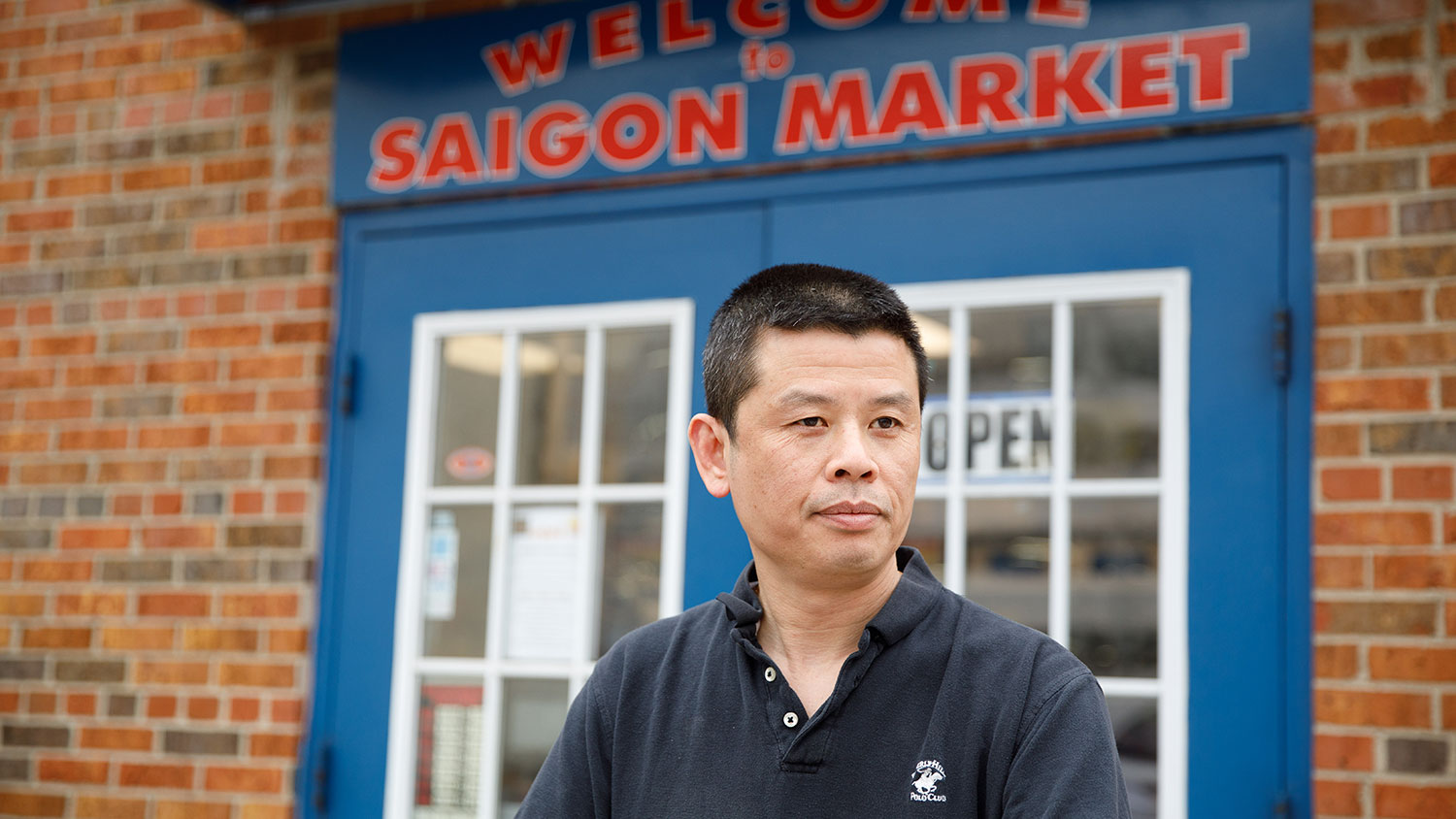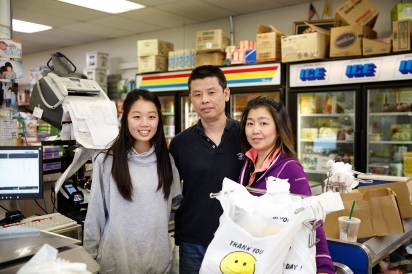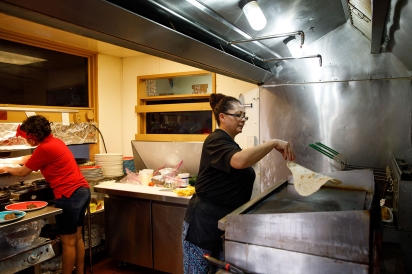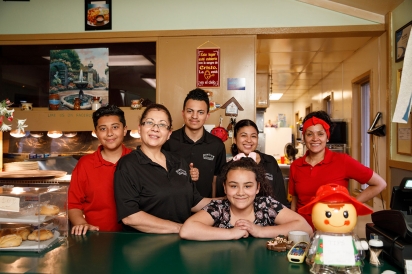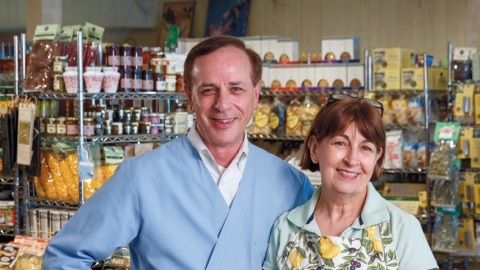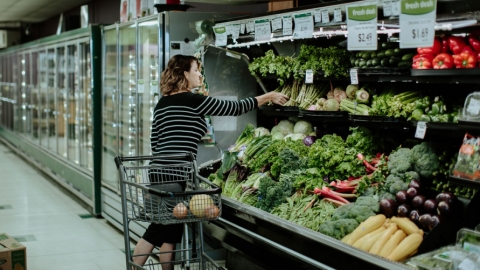Immigrants expand our palates and enrich our communities
Arriving in a new country means seeing things you’ve never seen before.
For Kevin Koak, who came from Cambodia to the United States as a child in 1979, that happened almost immediately. One of the first things he remembers marveling at was “the man in the box.” He was told it was a TV, something he had never seen before.
For Koak and other immigrants in Michiana, the personal transformation was profound. Equally profound is the valuable change of perspective each immigrant brings to their new home, whether, like Koak, it’s adding a dimension to a well-established grocery store, or giving new life to a downtown building, or even changing the food landscape and culture of an entire community.
Saigon Market
For the last five years, Koak has owned and operated Saigon Market, which has been a landmark in downtown South Bend, IN, for decades.
He had never been in the grocery business. He came to Goshen, IN, from Los Angeles for a job in manufacturing and to raise a family with his wife, Connie.
His factory foreman job was a good one, and it paid well. But, he says, after working someplace for more than 20 years, there comes a time when “you’re done.” His brother owned a business and, partially out of sibling rivalry, he figured he could run a business, too.
While the name of the store may lead a passer-by to believe it serves the culinary needs of only one segment of the local population, that is not the case. “I don’t just serve the Asian community,” Koak says.
That is plainly evident to anyone at Saigon Market on a Friday afternoon, when this corner of Colfax Avenue and Main Street turns into a bustling hive of activity rivaling that of a much bigger city. People pour into the store to get the best of the fresh arrivals from around the region. Inside, the din of conversation in different languages and the door opening and closing, opening and closing, lends a heightened energy to the normally mundane task of shopping for groceries.
When Koak got started, he listened to the established customer base and paid attention to what they wanted. One area he expanded was groceries for cuisines rooted in different African countries. He boosted his stocks and it really paid off, he says.
“We have a lot more African-American products,” Koak says. “We carry a lot of stuff that other groceries don’t carry.”
He’s added ackee, a West African fruit that became a prominent part of Caribbean cuisines; moambe, which is made from palm nuts and features in the dishes of Liberia, the Congo and Angola, among others; and ogbono, or bush mango, which is found in Nigerian dishes. This kind of ingenuity ensures that Saigon Market will remain a favorite local fixture for years to come.
Rincon Catracho
Maritza and Elvin Castellanos have made a transformation of a different sort with their restaurant, Rincon Catracho in Plymouth, IN.
They opened three years ago in what would seem like the ideal spot: A place right in the center of downtown, overlooking the Yellow River. But during the previous years the building either sat vacant or played host to short-lived restaurants. Then the Castellanoses, who came to the United States from Honduras in 1998, opened Rincon Catracho, which means Honduran corner.
“Many people thought it was not going to last too long,” Maritza says, “but we stayed positive against those thoughts.” Three years later, people are still dropping by the “Honduran corner” for a bite.
Maritza grew up cooking and always dreamt of having her own place.
“Since I was a little girl, I loved cooking,” she says. “I started cooking for friends—events like birthdays, things like that.”
Over time, the Latin community in Plymouth caught wind that Maritza was making scrumptious food for events. It would still be some time before she could open the restaurant.
“The initiative to open a restaurant was there for a long time, but we didn’t have the resources to start,” she says. “Since we are a Christian family, we began to pray about it. And today, we can thank God because through him and other people, we were able to start working on this project.”
Rincon Catracho has added colorful diversity to the area’s Latin-American food offerings.
“Every nation has its own flavor,” Maritza explains. “I cook beans. Mexicans cook beans. But if we were to put those beans together, we would see a great deal of difference.”
The condiments and the spices are distinct, and the way the ingredients are combined is key to the flavors of Honduras.
Plantain is one ingredient you’ll find in many dishes on the menu. Look for it in the plátano relleno (fried plantain topped with beef, potatoes, salsa and cheese) or the tajaditas, served with chicken, salsa and cheese. Yuca is featured in the chicharrón (a very, very good way of making pork rinds) con yuca.
If you aren’t familiar with Honduran cooking, Maritza suggests starting with a sample plate or a simple traditional dish like baleadas, which, at its most basic, is a fresh-cooked flour tortilla, layered with smashed beans, Honduran cream and cheese. You can also add avocado and chorizo with egg. If you are anything like me, you’ll be hooked in no time. And you will love the warm family atmosphere. Maritza and Elvin’s four children help them run the business. If you’re a soccer fan, it’s a great place to see a game on television.
“I am very grateful to the community, the Spanish and American communities,” Maritza says. “Mostly the American community. They come and taste our way of cooking and they have been very accepting.”
Maple Indian Cuisine
Outreach through food is also part of the philosophy at Maple Indian Cuisine in Goshen, IN. When owners Bobby and Rosie Singh opened nearly four years ago, it was the first Indian restaurant in Elkhart County.
Even before the doors opened, according to Rosie, there was a learning curve.
When it was time for inspections and certifications, county officials didn’t have a knowledge base to work from, Rosie says, which slowed the process. For example, the specifications for tandoori ovens aren’t the same as for other ovens more commonly found in restaurants.
Bobby loves cooking for guests at the Singhs’ home, Rosie says. He pulls out all the stops. So it was a natural extension of that passion to open a restaurant.
Bobby came to the United States in 1998 at the age of 19. He grew up in Punjab Province in northern India. It would be 12 years before he returned to India. His story and his hard work, Rosie says, inspire everyone at Maple Indian Cuisine. He oversees the kitchen, the cooking and the restaurant’s food trucks, which sell dishes from the restaurant around the area at lunchtime and at special events. Rosie has lived in Mexico, Colombia and India. She manages the front of the house.
Many of their dishes are rooted in northern India. Cuisine from this area, Rosie says, features many spices but is not spicy, at least not “hot spicy,” as customers sometimes expect. The staff is always happy to make suggestions and guide newcomers through the menu.
“It’s hard when you have a cuisine that not everyone knows,” Rosie says. “Indian food takes so much time to prepare, to blend your spices, to cook.”
Over the years the restaurant has developed a loyal customer base, and attracts newcomers with a variety of dishes, from butter chicken to lamb and goat curries, pakora and freshly made chutneys and sauces, just to name a few.
All three of these establishments have made a lasting mark on their communities, serving the people in them, enriching local culture and sharing a love for good food.
Koak is happy that his customers find what they love at Saigon Market, and he smiles when he thinks of his own success in building a multicultural community.
“I’m very blessed that I came to a country where if you work hard, you can have anything,” he says.
Saigon Market
208 W. Colfax Ave.
South Bend, IN
574.289.7623
Rincon Catracho
112 S. Michigan St.
Plymouth, IN
574.933.1677
facebook.com/bgko6
Maple Indian Cuisine
127 S. Main St.
Goshen, IN
574.533.0000
facebook.com/mapleindian


